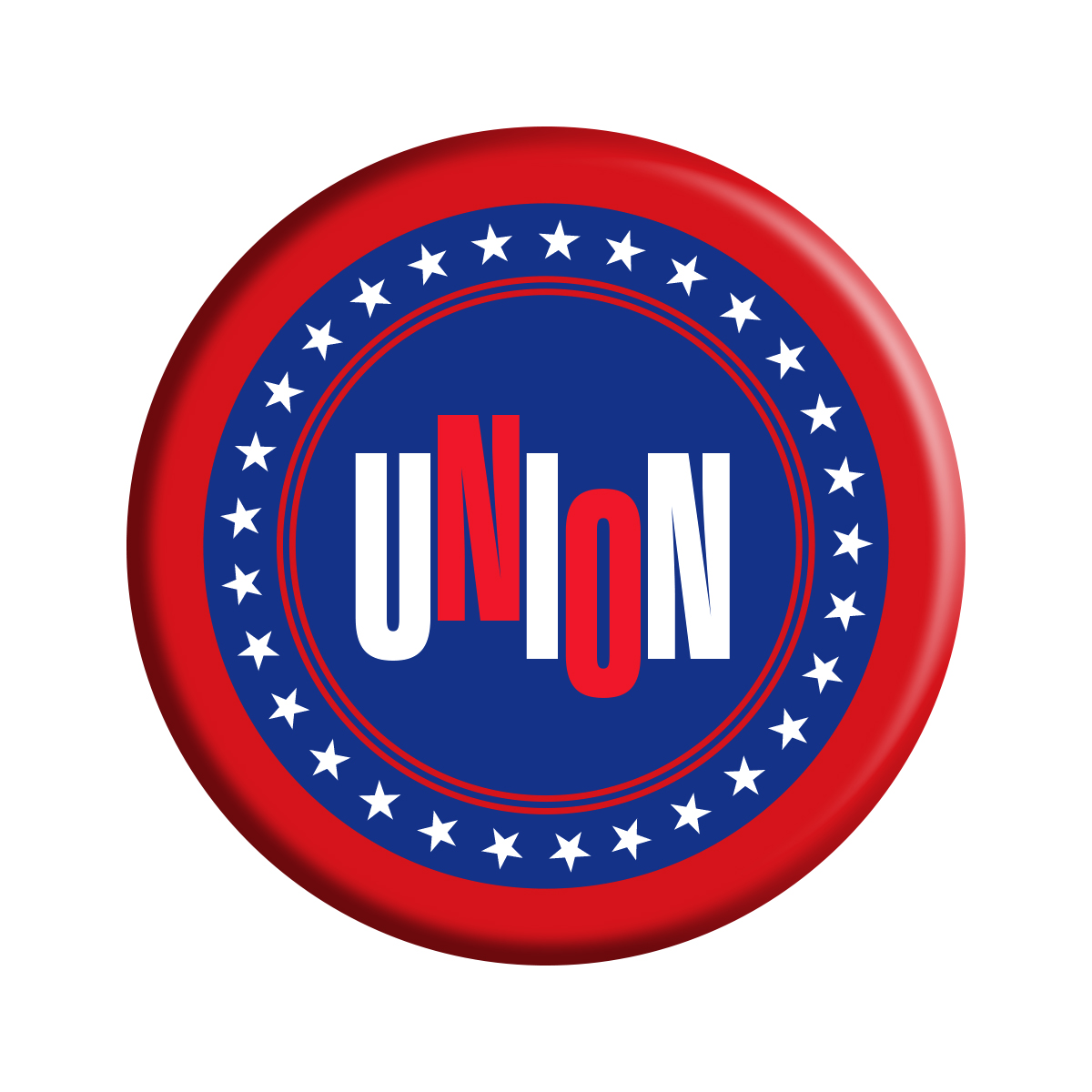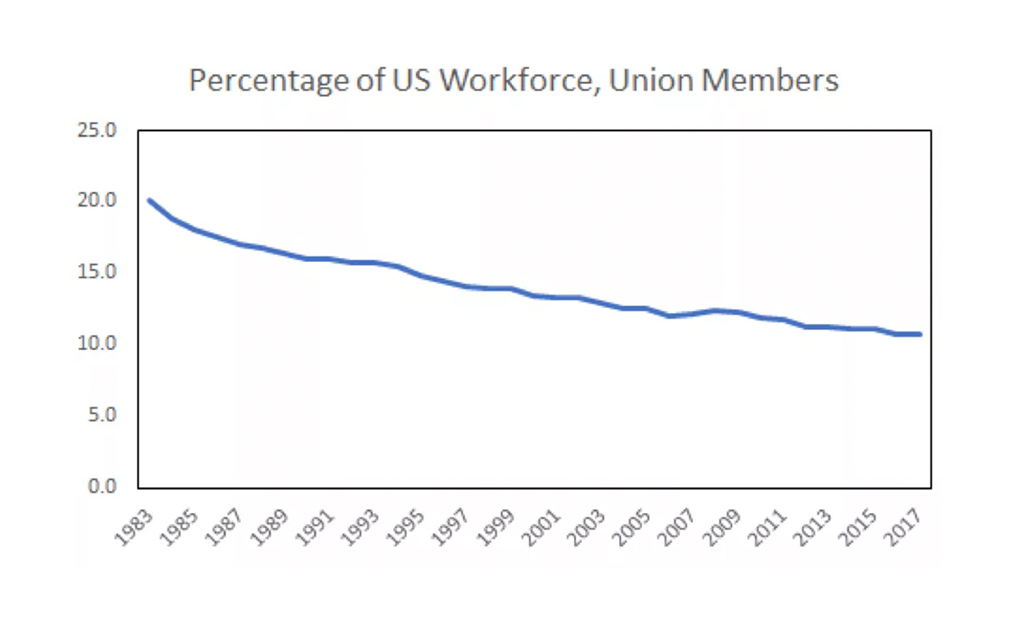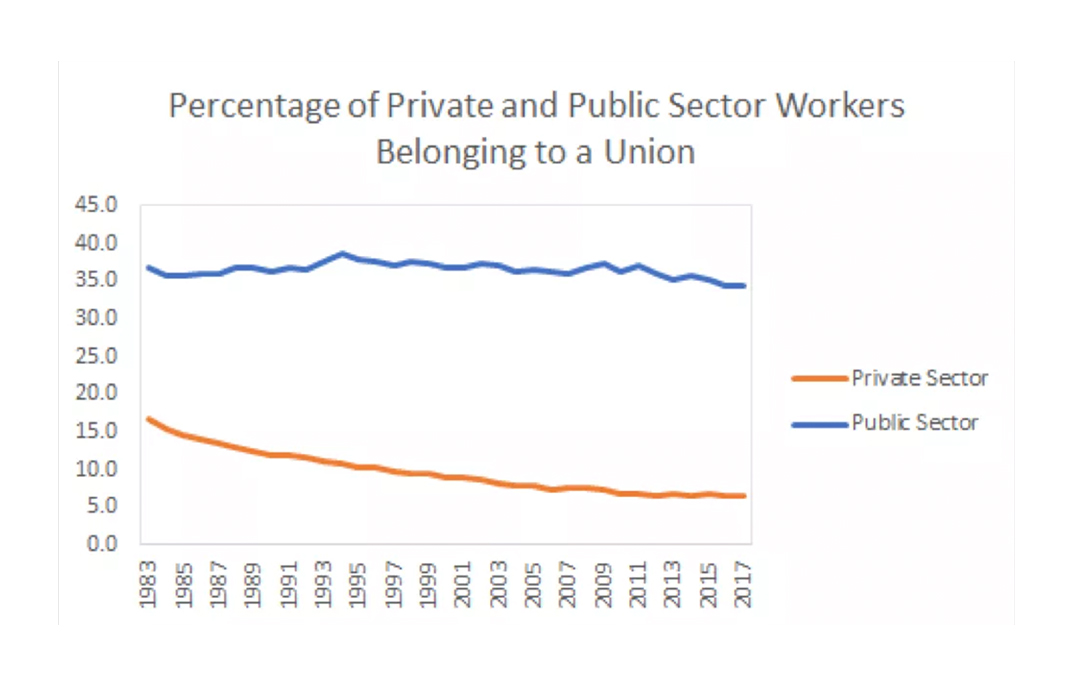
Once upon a time in America, unions were a force to be reckoned with. In 1954, labor union membership in the United States hit a peak of 34.8 percent, according to the Congressional Research Service; and the tendrils of those organizations could be felt in all aspects of civic life. Labor unions could advocate for worker-friendly policies, provide crucial assistance during local emergencies, serve as the backbone of many communities, and even decide political elections. In their seminal 1984 book on organized labor, economists Richard Freeman and James Medoff estimated that the union wage premium at the time was between 21 and 32 percent. (Of course, there was also an ugly side to labor unions: blatant and ugly discrimination against minorities, violent tactics, organized crime associations.)
Today, the footprint of unions has shrunk dramatically due to both the general decline of traditionally unionized private-sector industries in this country, and more concerted efforts to weaken unions. In 2017, only 10.7 percent of U.S. workers belonged to a union:

This decline has been driven almost exclusively by declines in private sector union membership—which fell from 16.8 percent in 1983 to only 6.5 percent in 2017, as the graph below illustrates:
Public sector union membership, by contrast, today sits at 34.4 percent and has roughly held steady since the 1980s, when the Bureau of Labor Statistics first began collecting this data.
The effects of this decline have been hotly debated. Conservatives argue that unions decrease the competitiveness and flexibility of U.S. companies. In an era rife with outsourcing and automation, they argue companies will opt to lay off their workers and ship the jobs to factories offshore when faced with the higher wages and generous benefits that unions tend to advocate for.

Progressives, however, argue that the country’s dramatic retreat from labor unions has had profoundly negative effects on the American worker. Back in 1998, the economist David Card estimated that the decline in union membership explained 10 to 20 percent of the increase in wage inequality among men over the previous 25 years. Researchers have also concluded that unions not only raised the salary of union members, but likely improved the incomes and intergenerational mobility of subsequent generations as well.
This week Pacific Standard will be taking a look at the current and future states of American labor. We’ll explore everything from the promise and limitations of “alt-labor” models of organizing, to the danger that autonomous vehicles pose to truck drivers (a traditional bastion of organized labor), to the future of songwriters in the Spotify era.
While the state of traditional organized labor may be weak by historical standards, the stories we’ll tell this week (as well as the stories that have played out recently in West Virginia and Oklahoma) suggest a more nuanced and complex narrative of worker organizing in the 21st century. Traditional unions may be down, but workers aren’t yet out.



